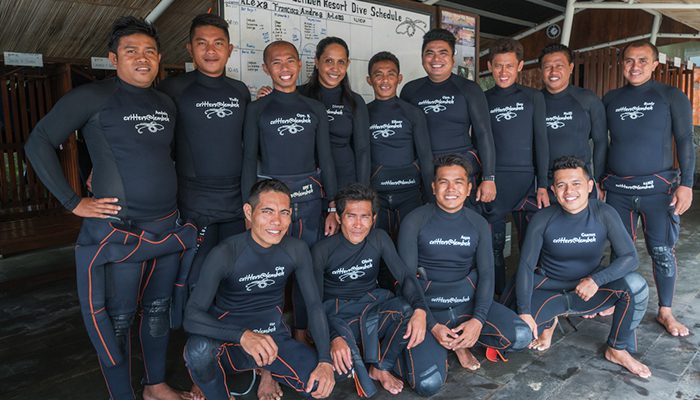Twinkle Twinkle Little Eggs

Lembeh’s reputation as the world’s premier destination for muck diving and fame as “Critter Capital” of the diving world has reached far and wide but not everyone knows our tranquil warm waters are also an important nursery for marine life and their eggs.
Diving in Lembeh is often compared to a treasure hunt and some of the most exciting treasures are the eggs of our rare, bizarre and beautiful sea creatures. Seeing critter eggs, with their exciting promise of new life to come, allows us a glimpse of the life cycle of the creatures we love, and this is especially fascinating when the eggs are found together with their parents.
We hope you will enjoy these images of a few of our favourite critters’ eggs!
Nudibranch: Hypselodoris apolegma
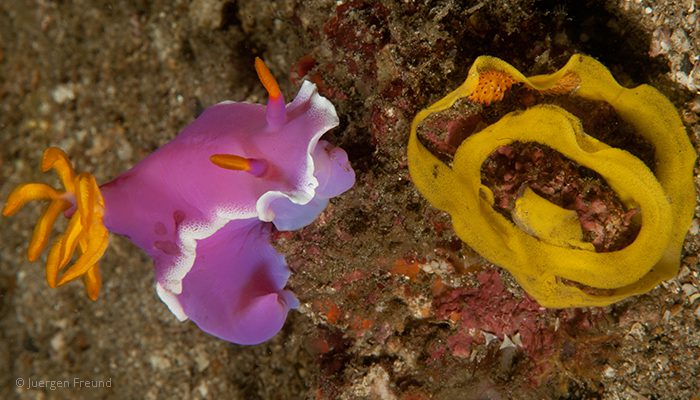
Some of the most photogenic and easiest subjects to photograph are colourful nudibranchs, and seeing them with their eggs is a treat, especially when they are a contrasting bright colour. A stunning example is Hypselodoris apolegma with its purple body, yellow gills and matching yellow egg ribbons.
Nudibranch: Rhinopias frondosa
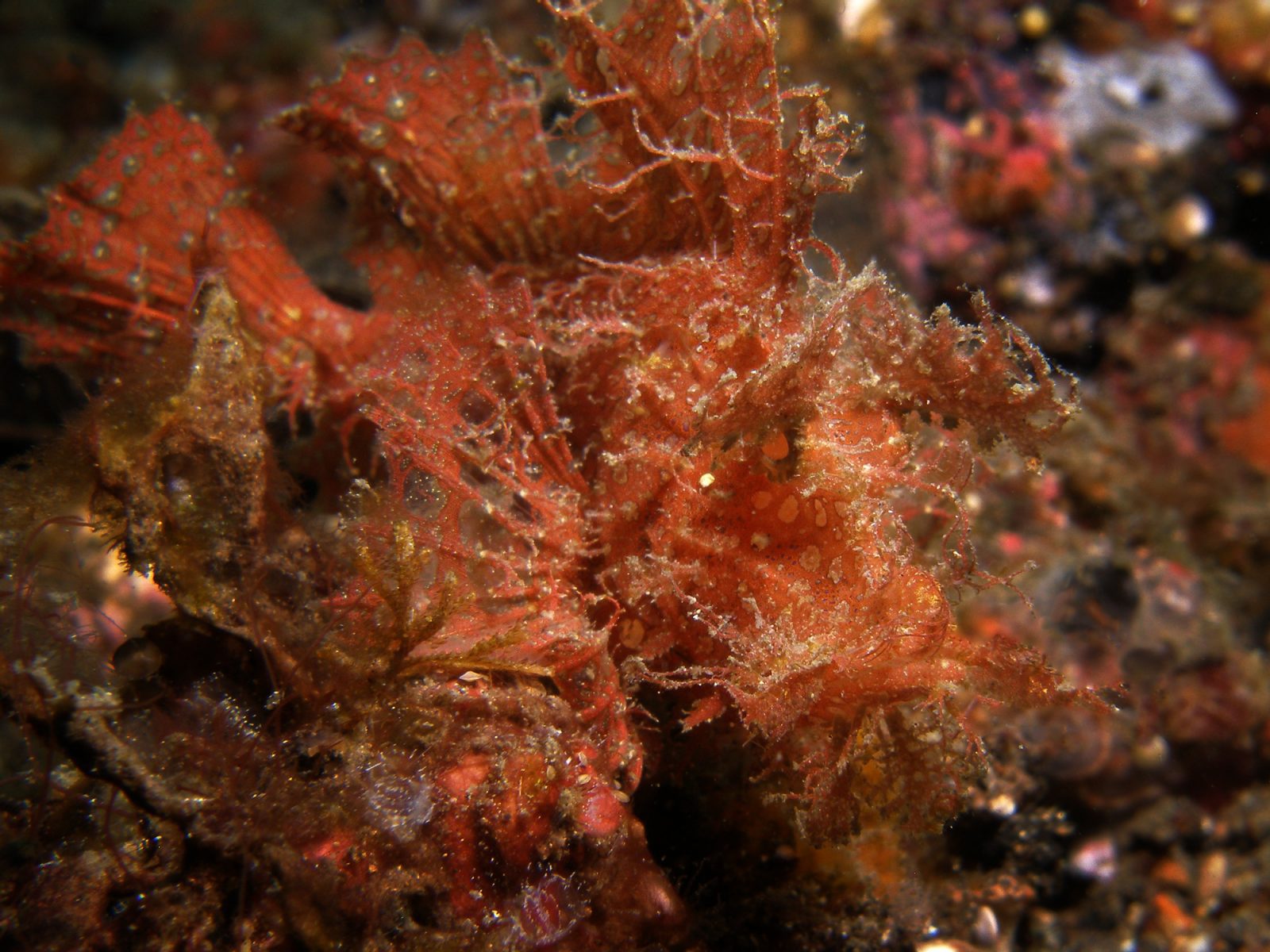
Although nudibranch eggs come in different forms, many lay their eggs in a counter-clockwise spiral. Nudibranchs apparently aren’t picky about where they do this, and on one memorable occasion we were amazed to find a beautiful red weedy rhinopias (Rhinopias frondosa) with a nudibranch egg spiral on its face!
Nudibranch: Favorinus
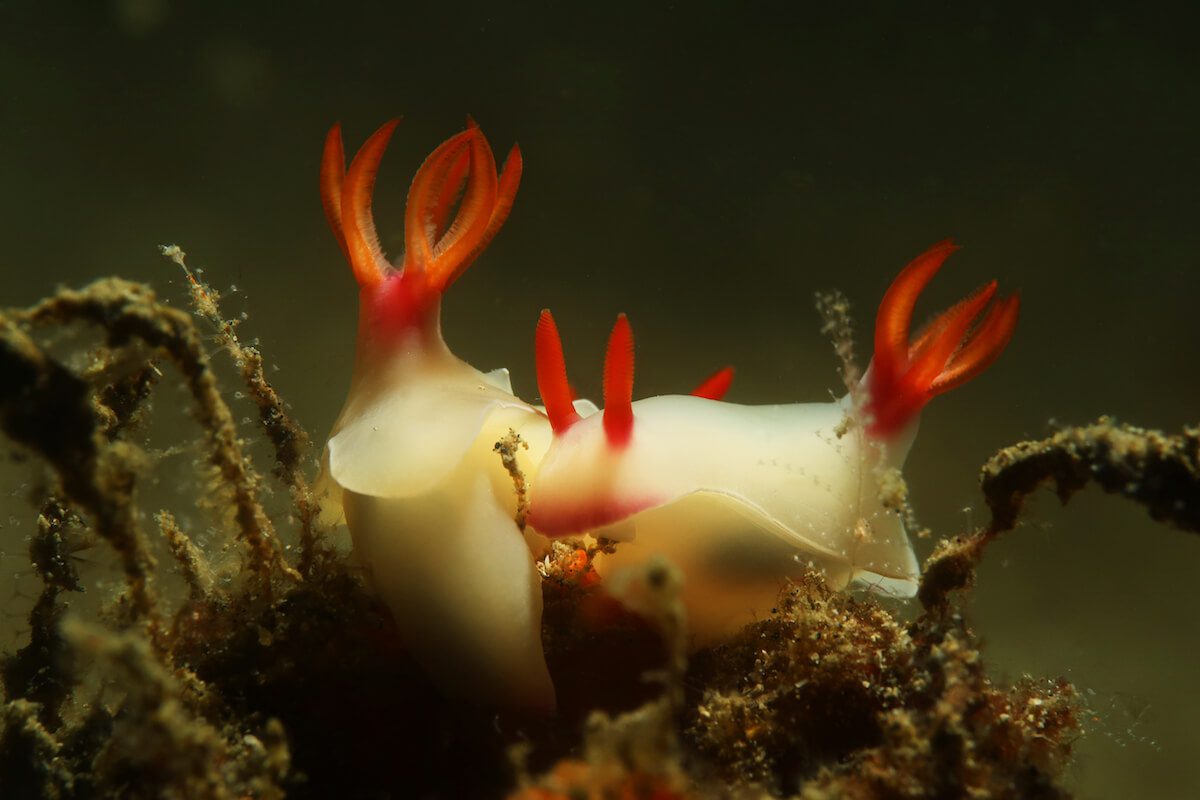
Did you know that all nudibranchs are carnivores, and that there are some like those in the Favorinus genus that eat the eggs of other nudibranchs?
Spanish Dancer
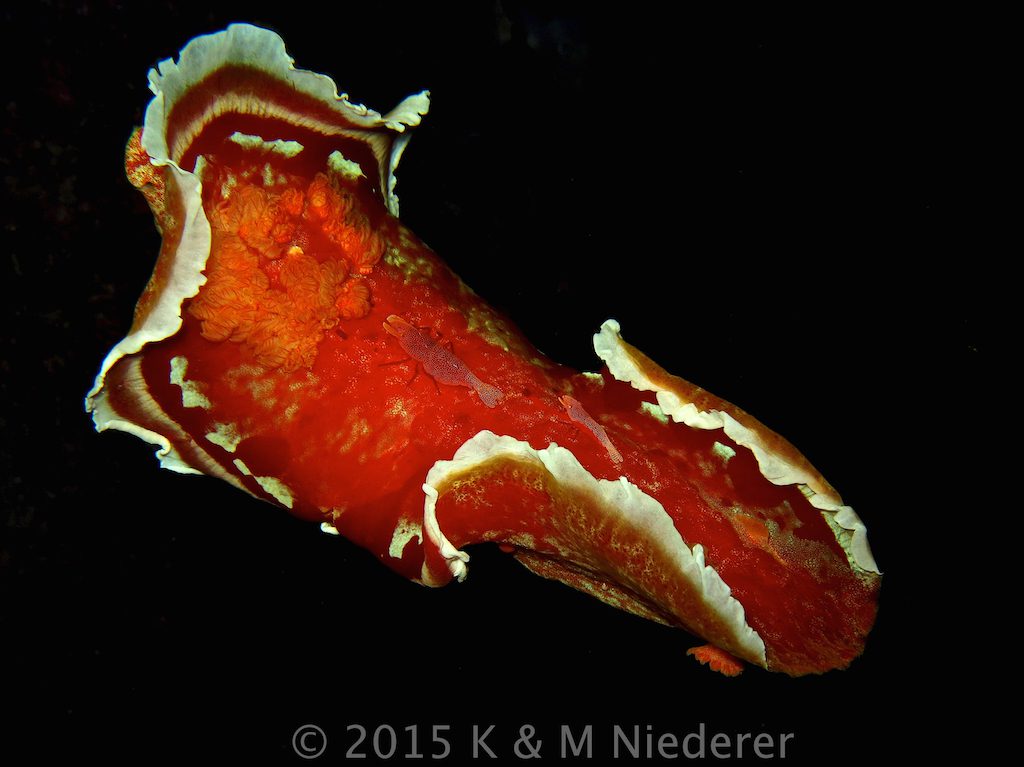
Some nudibranch eggs are so eye-catching they are an exciting find for underwater photographers even if the ‘parent’ is no longer present, such as with the Spanish dancer (Hexabranchus sanguinea) and its beautiful ruby-coloured ribbon egg mass.
Flamboyant Cuttlefish
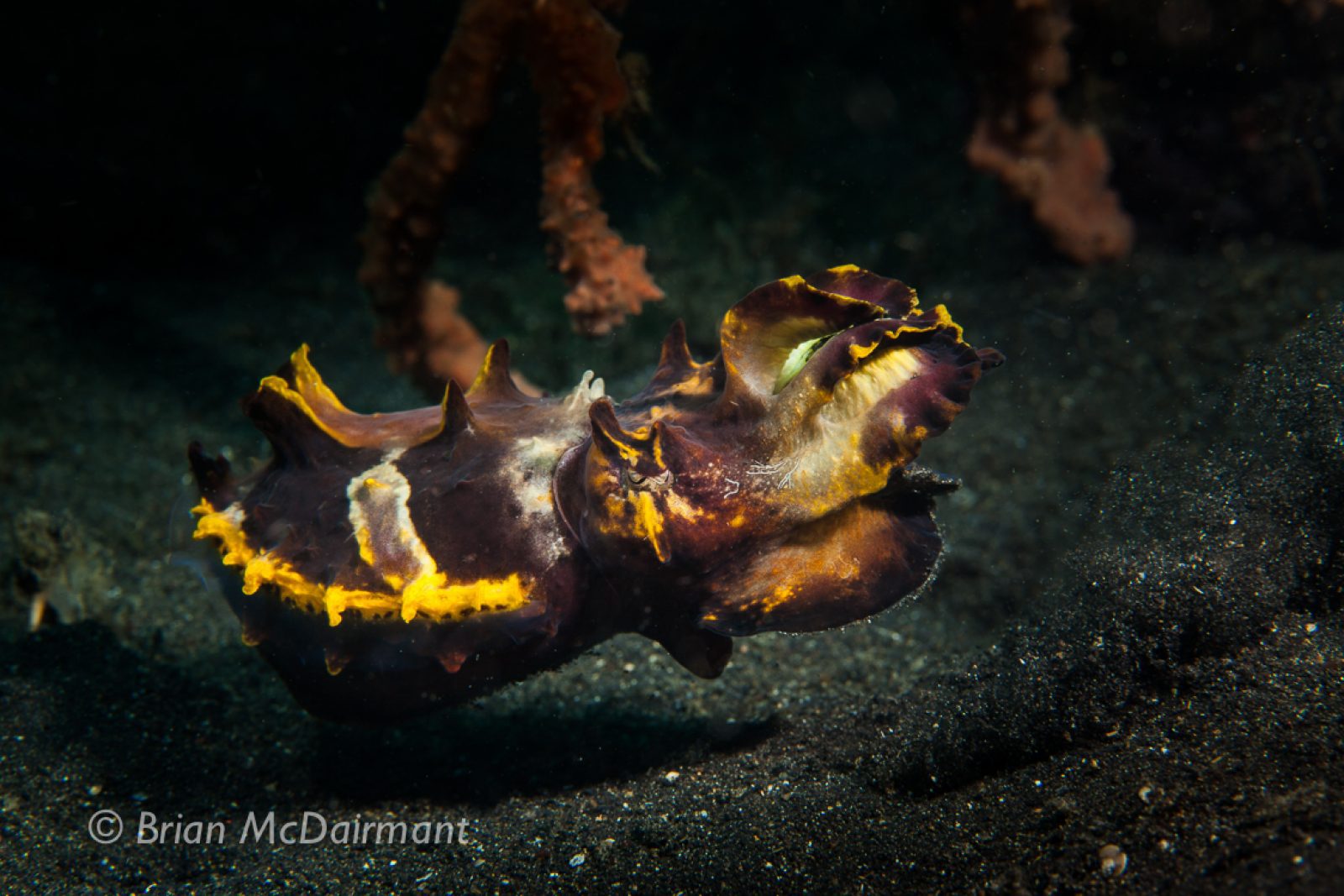
You will never forget the first time you see flamboyant cuttlefish (Metasepia pfefferi) eggs on a dive. After mating, the female lays her eggs on the underside of concave, hard surfaces like an empty shell or coconut half. Initially the eggs are an opaque white colour and about 1cm in diameter but as they mature, the eggs gradually become transparent and enlarge slightly. After 3-4 weeks when the tiny ‘flambos’ are ready to hatch you can see them in the egg moving around and flashing the bright colours that inspired this charismatic creature’s name.
Happily, unlike some of their octopus cousins, after laying eggs female flamboyants continue to live and produce more eggs which they will periodically tend to. Also unlike many octopus species, ‘mama flambo’ does not stay with the eggs and is free to wander, hunt and go about daily life.
Mantis Shrimp
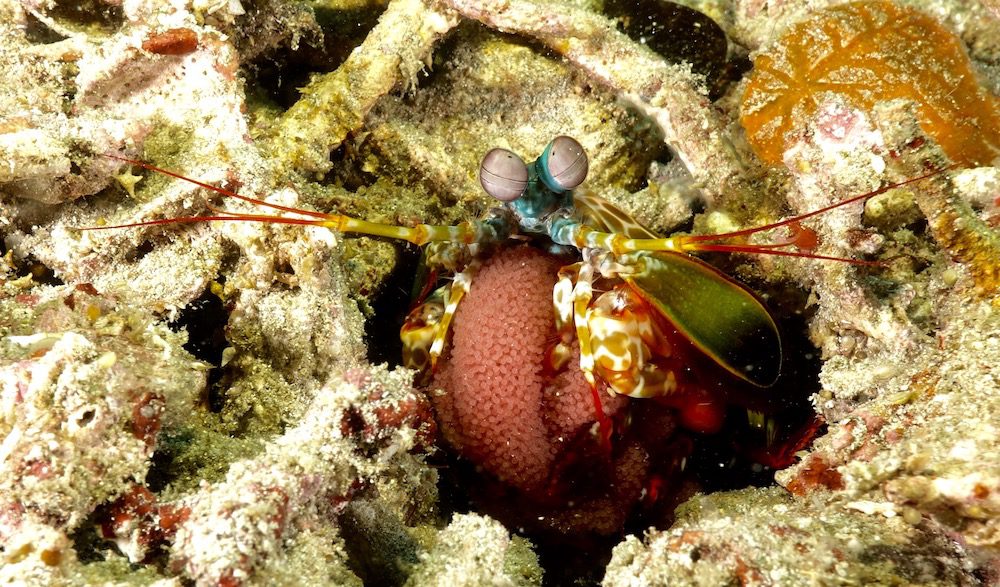
A fearsome predator infamous for being capable of smashing glass with its raptorial appendages, the peacock mantis shrimp (Odontodactylus scyllarus) is also spectacularly beautiful and is common on Lembeh dives. While some are shy, others are relaxed and allow us to watch and photograph them. When they have eggs they are particularly photogenic: the female has glands that secrete a bonding substance to ‘glue’ the eggs together into a brilliant, crimson mass which she holds in front of her and will use her maxillipeds (legs) to aerate and clean the eggs.
Hairy Shrimp
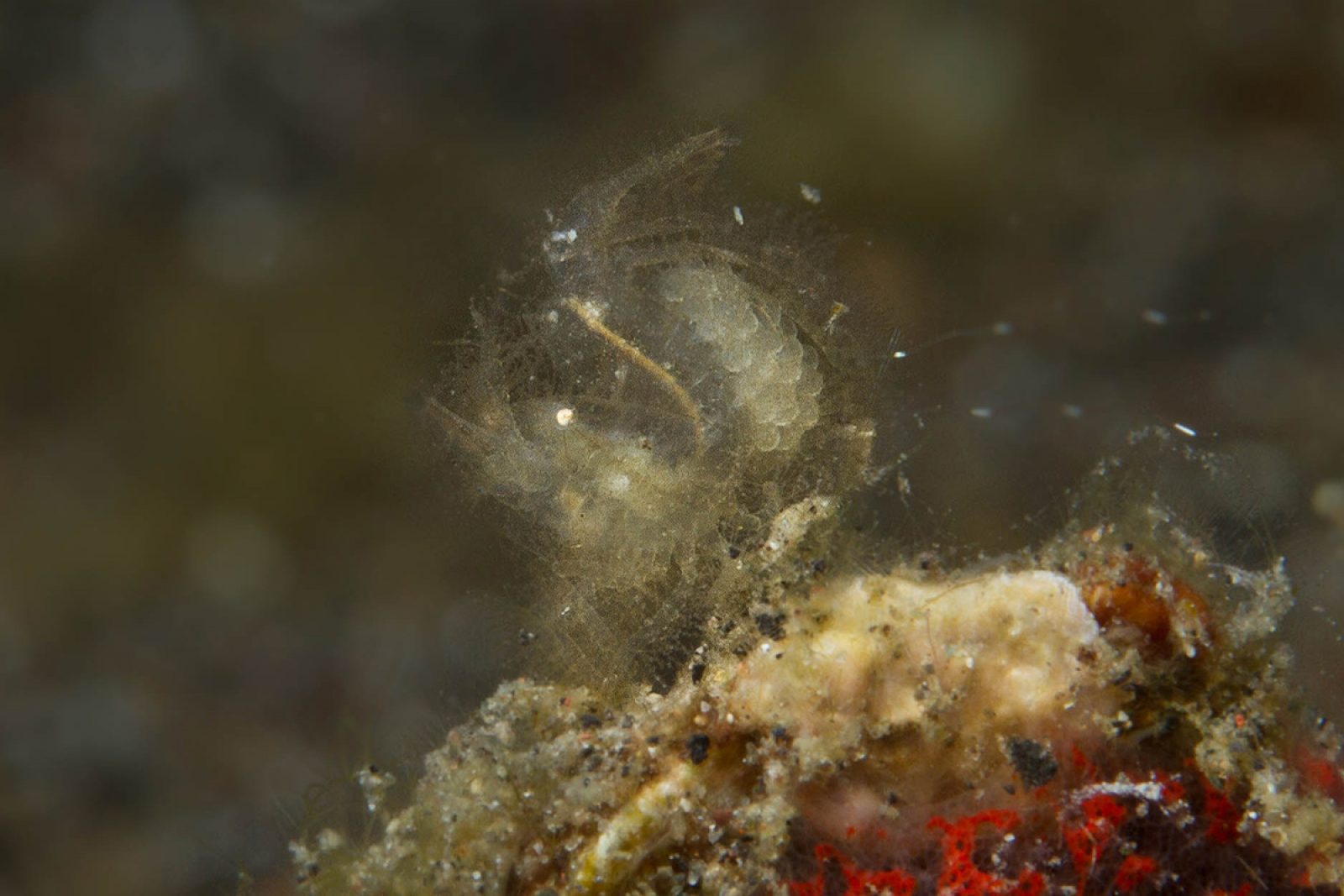
The hairy shrimp (Phycocaris simulans) is a perfect example of the extraordinary spotting abilities of Lembeh guides – these tiny creatures are just a couple of millimeters in size and also happen to be very well camouflaged to blend in with wisps of algae. When your guide not only points one out but writes on his slate that it has eggs, it will blow your mind! A very good pair of eyes, magnifying glass or a macro diopter on your camera is needed to appreciate the details on these tiny crustaceans, such as the 9 spoke-like lines radiating outwards from each eye and eggs which are kept between their body and tail.
Anemone Fishes
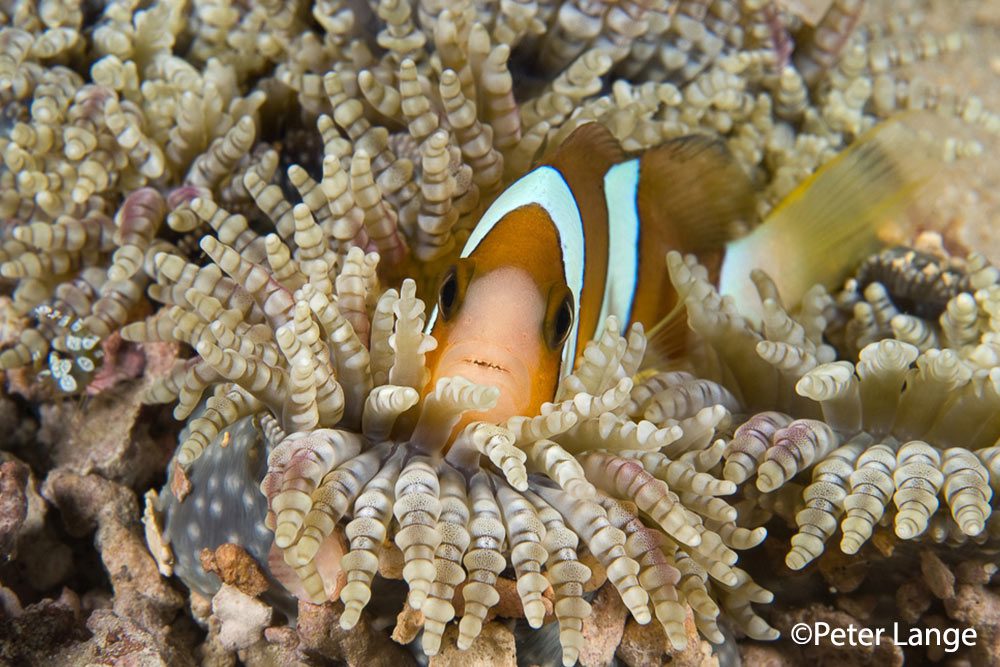
Living in a variety of beautiful anemones, anemone fishes, ‘Nemo’ or clownfishes make for photogenic subjects and fascinate people of all ages thanks to the famous film. There are many different species and in Lembeh you can see Clark’s (Amphiprion clarkii), pink (Amphiprion perideraion), skunk (Amphiprion akallopisos), orange (Amphiprion sandaracinos), saddleback (Amphiprion polymnus), spinecheek (Premnas biaculeatus), tomato (Amphiprion frenatus), and false (Amphiprion ocellaris).
Members of the territorial damselfish family, anemone fishes are fiercely protective of their homes and the Clark’s and saddleback varieties in Lembeh are known for their aggressive attacks on anyone foolhardy enough to come within a few meter’s range of their ‘queendom’. Luckily for us, their relatively small size means that even the worst attacks resulting in bites only make for a startling experience and good story later (“it was THIS big!!”) rather than serious injury.
They lay eggs on any hard surface near the anemone – anything ranging from a piece of wood to a glass bottle – and if there is none to be found, they will drag something over to the anemone. If the eggs are mature enough you can see the silvery fry inside and even their tiny eyes! Their attentive parents regularly clean and aerate the eggs with their mouths to keep them healthy and free of algae.
Mandarin Fish
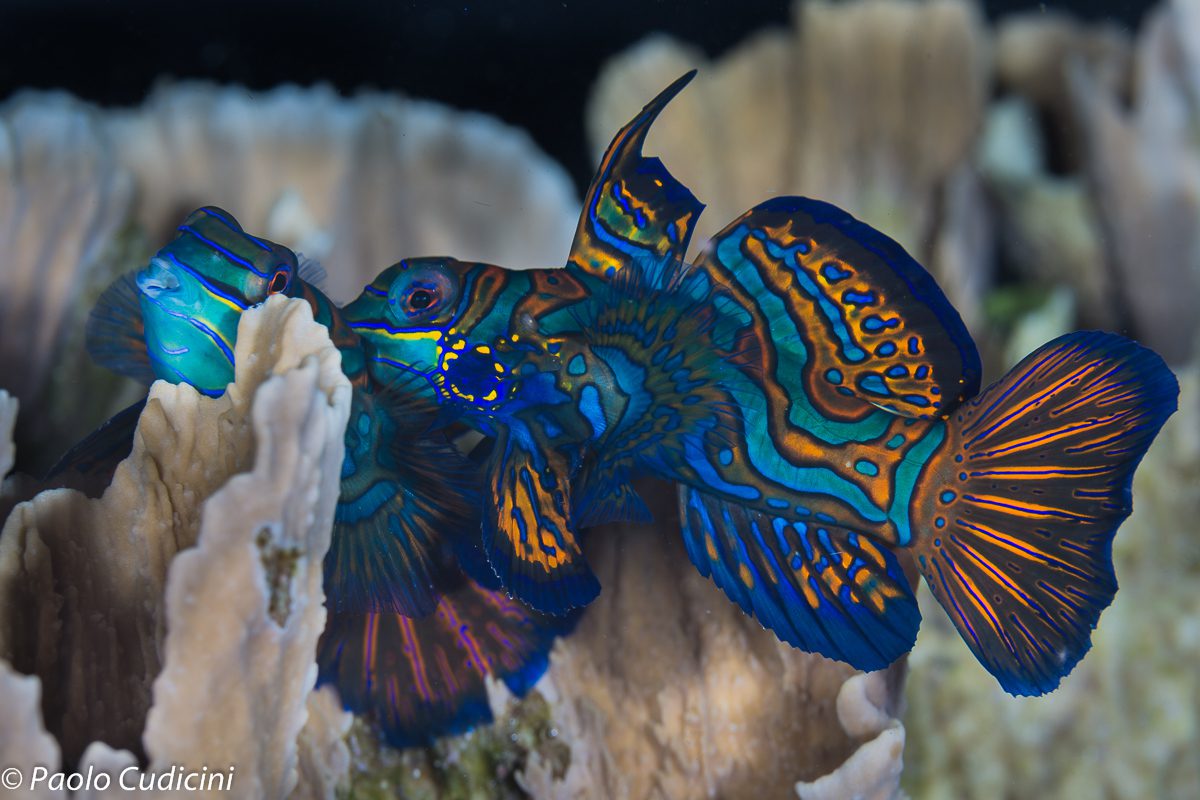
No one can resist the charm of the beautiful mandarin fish (Synchiropus splendidus) and if you witness their mating ritual, you’ll agree their pouty-mouthed fluttering is one of the cutest couplings in the animal kingdom. You have to be lucky (and patient) to get a photo though, as the release of eggs and sperm is a lightning-quick event taking place only at dusk.
Muck Dive and Critter Eggs In Lembeh Strait
Whatever your favourite creatures are in Lembeh, being able to see their eggs makes for an amazing muck dive (and great photos!) Keep an eye out or ask your guide to find critter eggs for you; their thousands of hours of in-water experience combined with the best guide training in the world means they are uniquely qualified to show you these miniature miracles of nature.
Explore Lembeh Resort rates and secure your spot for an extraordinary dive adventure! To join us or make an inquiry, contact us at: reservations@lembehresort.com
